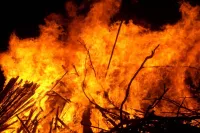Olympic National Park, situated on Washington's Olympic Peninsula, encompasses four distinct regions: the Pacific coastline, alpine areas, the west-side temperate rainforest, and the drier east-side forests. It features three diverse ecosystems: subalpine forests and wildflower meadows, temperate forests, and the rugged Pacific coast. This variety contributes to the park's unique biodiversity and scenic beauty, making it a popular destination for nature enthusiasts.
1907: Olympic National Forest
In 1907, the Olympic Forest Reserve became the Olympic National Forest.
March 2, 1909: Mount Olympus National Monument Designation
On March 2, 1909, President Theodore Roosevelt designated the park as Mount Olympus National Monument.
1909: Mount Olympus National Monument Created
In 1909, President Theodore Roosevelt created Mount Olympus National Monument.
June 29, 1938: Redesignation as a National Park
On June 29, 1938, the monument was redesignated a national park by Congress and President Franklin D. Roosevelt.
1938: National Park Creation
In 1938, President Franklin D. Roosevelt signed a bill creating Olympic National Park.
1939: Headquarters Construction
In 1939, the Civilian Conservation Corps constructed a headquarters with funds from the Public Works Administration.
1953: National Park Expansion
In 1953, the national park was expanded by 47,753 acres to include the Pacific coastline and portions of the Queets and Bogachiel valleys.
1976: International Biosphere Reserve Designation
In 1976, Olympic National Park was designated by UNESCO as an International Biosphere Reserve.
1981: World Heritage Site Designation
In 1981, Olympic National Park was designated as a World Heritage Site by UNESCO.
1982: Number of Glaciers in the Park
In 1982, there were 266 glaciers within Olympic National Park.
1988: Olympic Wilderness Designation
In 1988, Congress designated 95 percent of the park as the Olympic Wilderness.
2009: Glacier Decline
By 2009, the number of glaciers within the national park declined to 184 due to climate change.
2014: Dam Removal Completion
In 2014, the removal of the Elwha and Glines Canyon Dams was completed as part of the Elwha Ecosystem Restoration Project.
2015: Rare Rainforest Fire
In the summer of 2015, a severe drought led to a rare rainforest fire in Olympic National Park.
2017: Daniel J. Evans Wilderness Renaming
In 2017, the Olympic Wilderness was renamed Daniel J. Evans Wilderness in honor of Daniel J. Evans.
2017: Wilderness Renamed
In 2017, the Olympic Wilderness was renamed the Daniel J. Evans Wilderness.
2022: Wilderness Expansion Unsuccessful
In 2022, a proposed expansion of the wilderness area by 125,000 acres was not successful.
May 7, 2023: Hurricane Ridge Visitor Center Fire
On May 7, 2023, the Hurricane Ridge visitor center burned down.
2024: Park Visitation
In 2024, Olympic National Park had over 3.7 million visitors, ranking 25th among all parks in the United States.
Mentioned in this timeline
The United States of America is a federal republic located...
Climate change encompasses global warming and its far-reaching effects on...

Fire is a rapid oxidation process called combustion releasing heat...
UNESCO is a specialized agency of the United Nations UN...
National parks are protected areas of natural semi-natural or developed...
Trending
Yannick Hanfmann is a German professional tennis player He reached his highest ATP singles ranking of world No in July...

14 days ago Berrettini defeats Popyrin in Vienna Open opener; faces Norrie next in ATP.
The UEFA Europa League UEL is an annual football club competition organized by UEFA since Serving as the second-tier competition...
28 minutes ago Avengers: Doomsday Trailer Release Date Revealed; Fantastic Four Spoiler Leaked, New Rumors Surface

1 hour ago Isla Fisher Reveals Woody Harrelson's Unusual Habit on Air, Leaving Al Roker in Hysterics

Padma Lakshmi is a multifaceted American personality known for her work as a television host model author businesswoman and activist...
Popular

Nancy Pelosi is a prominent American politician notably serving as...

Zohran Kwame Mamdani is an American politician currently serving as...

William Franklin Graham III commonly known as Franklin Graham is...

Chuck Schumer is the senior United States Senator from New...

Gavin Newsom is an American politician and businessman currently serving...
Abigail Spanberger is an American politician who served as the...